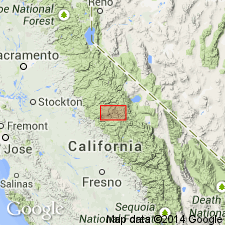
- Usage in publication:
-
- Tuolumne intrusive series*
- Modifications:
-
- Named
- Dominant lithology:
-
- Granite
- Quartz monzonite
- Granodiorite
- AAPG geologic province:
-
- Sierra Nevada province
Summary:
[Named for exposures along Tuolumne River, Yosemite National Park, CA]. [no type designated]. Includes (oldest to youngest): Sentinel granodiorite, Half Dome quartz monzonite, and Johnson granite porphyry --units which extend in large bodies from upper half of the Yosemite Valley north to Tuolumne River and northeast into High Sierra. Probably Cretaceous(?) age.
Source: GNU records (USGS DDS-6; Menlo GNULEX).
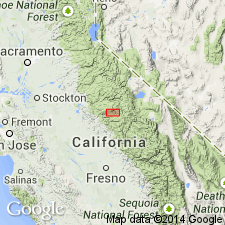
- Usage in publication:
-
- Tuolumne intrusive series*
- Modifications:
-
- Age modified
- AAPG geologic province:
-
- Sierra Nevada province
Summary:
K-Ar ages are given for units within series as follows [evidently from Curtis and others, 1958, cited in bibliography]: Sentinel Granodiorite, 86.4 Ma; Half Dome Quartz Monzonite, 84.1 Ma; Cathedral Peak Granite, 83.7 Ma.
Source: GNU records (USGS DDS-6; Menlo GNULEX).
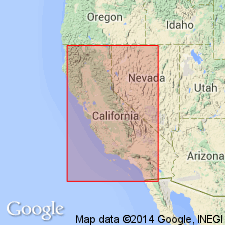
- Usage in publication:
-
- Tuolumne Intrusive Series*
- Modifications:
-
- Age modified
- Geochronologic dating
- AAPG geologic province:
-
- Sierra Nevada province
Summary:
Tuolumne Intrusive Series dated radiometrically as Late Cretaceous based on K-Ar age of 90 Ma maximum.
Source: GNU records (USGS DDS-6; Menlo GNULEX).
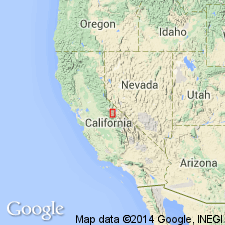
- Usage in publication:
-
- Tuolumne Intrusive Series*
- Modifications:
-
- Revised
- Redescribed
- AAPG geologic province:
-
- Sierra Nevada province
Summary:
Cathedral Peak Granite and Half Dome Quartz Monzonite of Tuolumne Intrusive Series, renamed Cathedral Peak Granodiorite and Half Dome Granodiorite since both are predominantly granodiorite. Western part of Sentinel Granodiorite of Calkins (1930) including Sentinel Rock, type locality, is removed from Tuolumne Intrusive Series (D.L. Peck, 1976, written commun.). Peck designates eastern part as tonalite of Glacier Point which does belong to Tuolumne Intrusive Series. Also included are quartz diorite north of May Lake, Granodiorite of Kuna Crest (Kistler, 196) and granodiorite of Grayling Lake (Peck, 1964). Series is early Late Cretaceous age (Evernden and Kistler, 1970, p.17).
Source: GNU records (USGS DDS-6; Menlo GNULEX).
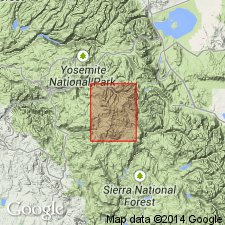
- Usage in publication:
-
- Tuolumne Intrusive Suite*
- Modifications:
-
- Redescribed
- AAPG geologic province:
-
- Sierra Nevada province
Summary:
Named changed from Tuolumne Intrusive Series to Tuolumne Intrusive Suite [see recommendation by Sohl (1977) in which "suite" is proposed as term of group rank, adopted in Art 10(i) in Code]. Suite includes (oldest to youngest): granodiorite of Grayling Lake, granodiorite of Kuna Crest, granite of Marie Lakes, Half Dome Granodiorite, Cathedral Peak Granodiorite, and [Johnson Granite Porphyry]. Age is Late Cretaceous.
Source: GNU records (USGS DDS-6; Menlo GNULEX).
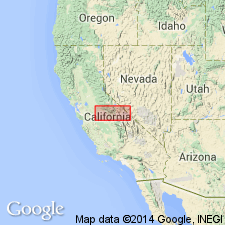
- Usage in publication:
-
- Tuolumne Intrusive Suite*
- Modifications:
-
- Geochronologic dating
- AAPG geologic province:
-
- Sierra Nevada province
Summary:
U-Pb ages of samples (located on map) from granodiorite of Kuna Crest, quartz diorite of May Lake and Cathedral Peak Granodiorite [of Tuolumne Intrusive Suite] range from 91.1 to 88 Ma.
Source: GNU records (USGS DDS-6; Menlo GNULEX).
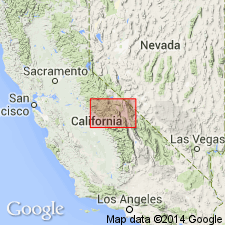
- Usage in publication:
-
- Tuolumne Intrusive Suite*
- Modifications:
-
- Revised
- AAPG geologic province:
-
- Sierra Nevada province
Summary:
Includes (oldest to youngest): granodiorite of Kuna Crest, tonalite of Glen Aulin, tonalite of Glacier Point, granodiorite of Grayling Lake, Half Dome Granodiorite, Cathedral Peak Granodiorite, and Johnson Granite Porphyry. Possible earlier units are granodiorite of Yosemite Creek and Sentinel Granodiorite. Suite underlies 1200 sq km of High Sierra. Units are concentrically arranged; oldest occupy margins; youngest forms core.
Source: GNU records (USGS DDS-6; Menlo GNULEX).
For more information, please contact Nancy Stamm, Geologic Names Committee Secretary.
Asterisk (*) indicates published by U.S. Geological Survey authors.
"No current usage" (†) implies that a name has been abandoned or has fallen into disuse. Former usage and, if known, replacement name given in parentheses ( ).
Slash (/) indicates name conflicts with nomenclatural guidelines (CSN, 1933; ACSN, 1961, 1970; NACSN, 1983, 2005, 2021). May be explained within brackets ([ ]).

